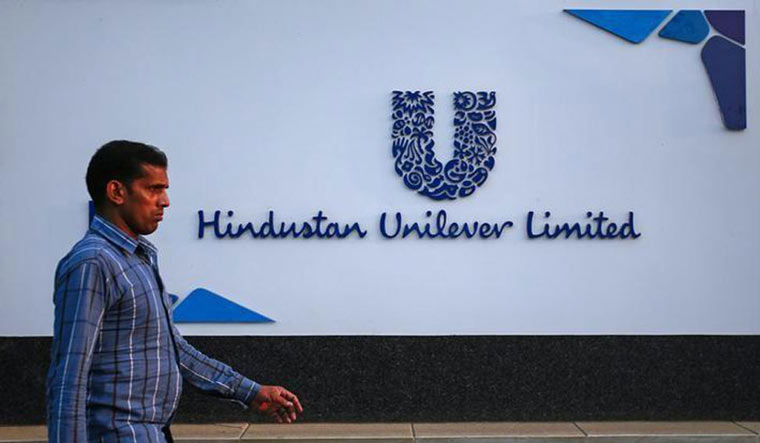Fast-moving consumer goods companies were hit on two fronts last year. On the one hand, rising input costs pinched margins and forced companies to raise prices. But, rising inflation also hit consumer demand, especially the rural areas. Quarterly earnings of Hindustan Unilever, the largest FMCG company in the country, signal high raw material costs continue to hurt, although correction in prices of a few commodities offers some respite. Volume recovery though remains weak and is expected to be only gradual.
Hindustan Unilever (HUL) on Thursday reported a 10 per cent year-on-year rise in net profit for the January-March quarter at Rs 2,552 crore, compared with Rs 2,327 crore in the same period a year ago. The company's fourth-quarter revenue was up 11 per cent from a year ago to Rs 14,638 crore from Rs 13,190 crore.
However, much of this turnover growth continues to be led by price hikes taken earlier. Volumes (number of packs sold) for the maker of Surf detergent and Bru Coffee in the March quarter grew only 4 per cent, compared with a 5 per cent volume uptick in the December 2022 quarter.
"The near-term operating environment is likely to remain volatile. With inflation easing due to the lapping of high base and sequential softening in a few commodities, price and volume growths will rebalance. Market volumes will recover gradually as consumption habits readjust," said Sanjiv Mehta, MD and CEO of HUL.
According to Amnish Aggarwal, head of research at Prabhudas Lilladher, HUL's volumes continue to be led by urban markets, while rural volumes have improved sequentially.
Last quarter, HUL's raw material costs rose 4.5 per cent year-on-year to Rs 4,546 crore. However, sequentially raw material costs were down 4.6 per cent.
Inflation in key commodities is softening, HUL pointed out. For instance, Brent crude oil is down 16 per cent year-on-year, soda ash is down 6 per cent, caustic soda has corrected around 25 per cent and palm oil is down 39 per cent. On the other hand, barley prices are up 8 per cent and milk powder has surged 18 per cent. However, compared to their long-term averages, key commodity prices remain elevated, the company warned.
Higher than normal summer temperatures, unseasonal rainfall in many areas and uncertainties around normal monsoon due to expected El Nino weather conditions, will weigh in the near term, say analysts.
"Inflation has moderated in key commodities but remains elevated year-on-year. However, the operating environment remains volatile with a high inflationary scenario and adverse weather conditions on the cards," said Aggarwal.
According to HUL, the FMCG market volumes are likely to have been flat in the March quarter, with rural market volumes declining by 3 per cent.
The company will seek "competitive volume growth" in the near term with a "right price-value equation). It also aims to step up investments in advertising and promotions.
HUL shares were down around 1.5 per cent in afternoon trading on Thursday at Rs 2,468. Several other FMCG stocks like Dabur, and Marico also traded in the red. The broader BSE Sensex was trading up around 260 points or 0.4 per cent at 60,545.76.



